|
Argot: Art Dictionary Term Of The Month: The Diagonal MethodAnkan Kazi February 01, 2023 As one of India’s most well-known artists, Tyeb Mehta still commands our attention for his commitment to experimentation. His ‘Diagonal series’ established him as a dynamic figure within the world of modern art, but how did this diagonal method come to be an important tool of composition in the last century? It all started with the invention of another compositional tool called the 'rule of thirds'. Read below as we explore the origins of this artistic tool and see how it has evolved over time. |
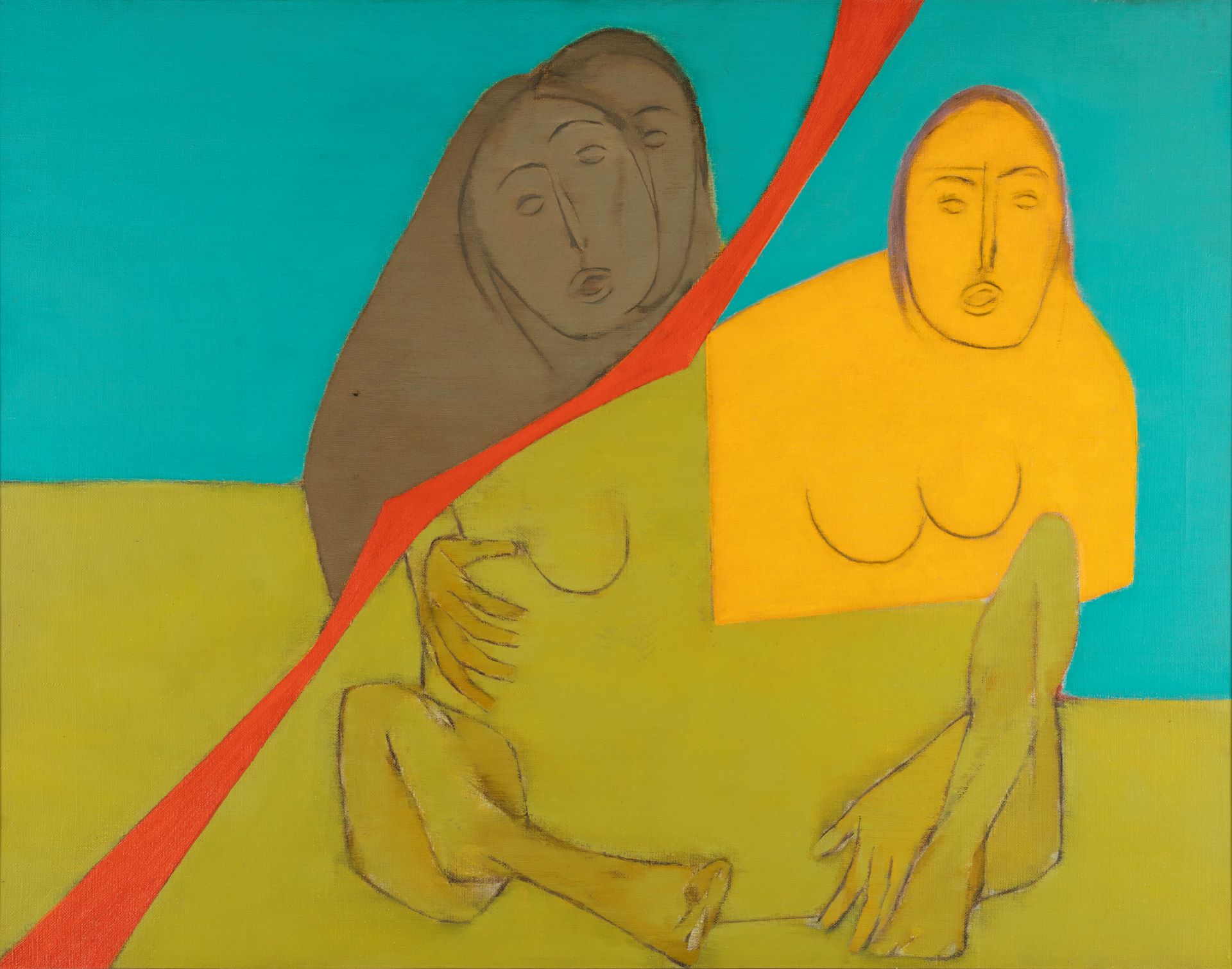
Tyeb Mehta
Diagonal Series - 1972
Oil on canvas
Private Collection
|
Origins The formulation of a ‘rule of thirds’ in visual imagery probably goes back as early as the 1790s when an English engraver and antiquarian, John Thomas Smith wrote about it in his illustrated book 'Remarks on Rural Scenery' (1797). In a passage responding to the painter Sir Joshua Reynolds’ discussion on balancing light and shade in painting, he wrote: 'Analogous to this "Rule of thirds", (if I may be allowed so to call it) I have presumed to think that, in connecting or in breaking the various lines of a picture, it would likewise be a good rule to do it, in general, by a similar scheme of proportion; for example, in a design of landscape, to determine the sky at about two-thirds; or else at about one-third, so that the material objects might occupy the other two: In short, in applying this invention, generally speaking, or to any other case, whether of light, shade, form, or color, I have found the ratio of about two thirds to one third, or of one to two, a much better and more harmonizing proportion, then the precise formal half...' |
|
Sir Joshua Reynolds Landscape Image courtesy: Wikimedia Commons |

We see the rule of thirds at play in this landscape by James Baillie Fraser from the 1820s.
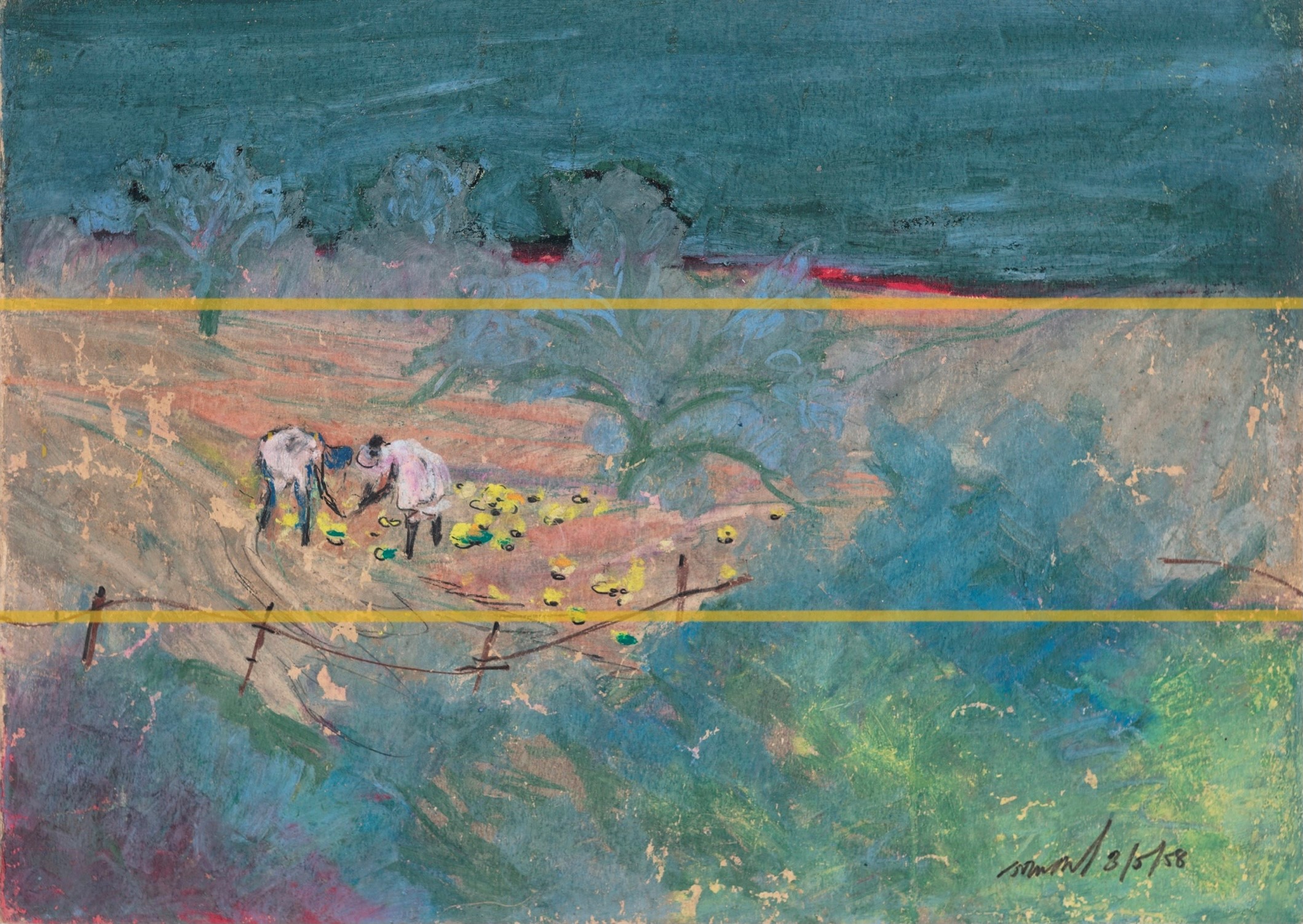
In the 1950s Gopal Ghose’s landscapes seem more spontaneous, but still follow the ‘rule’, simply moving the horizon line upwards.
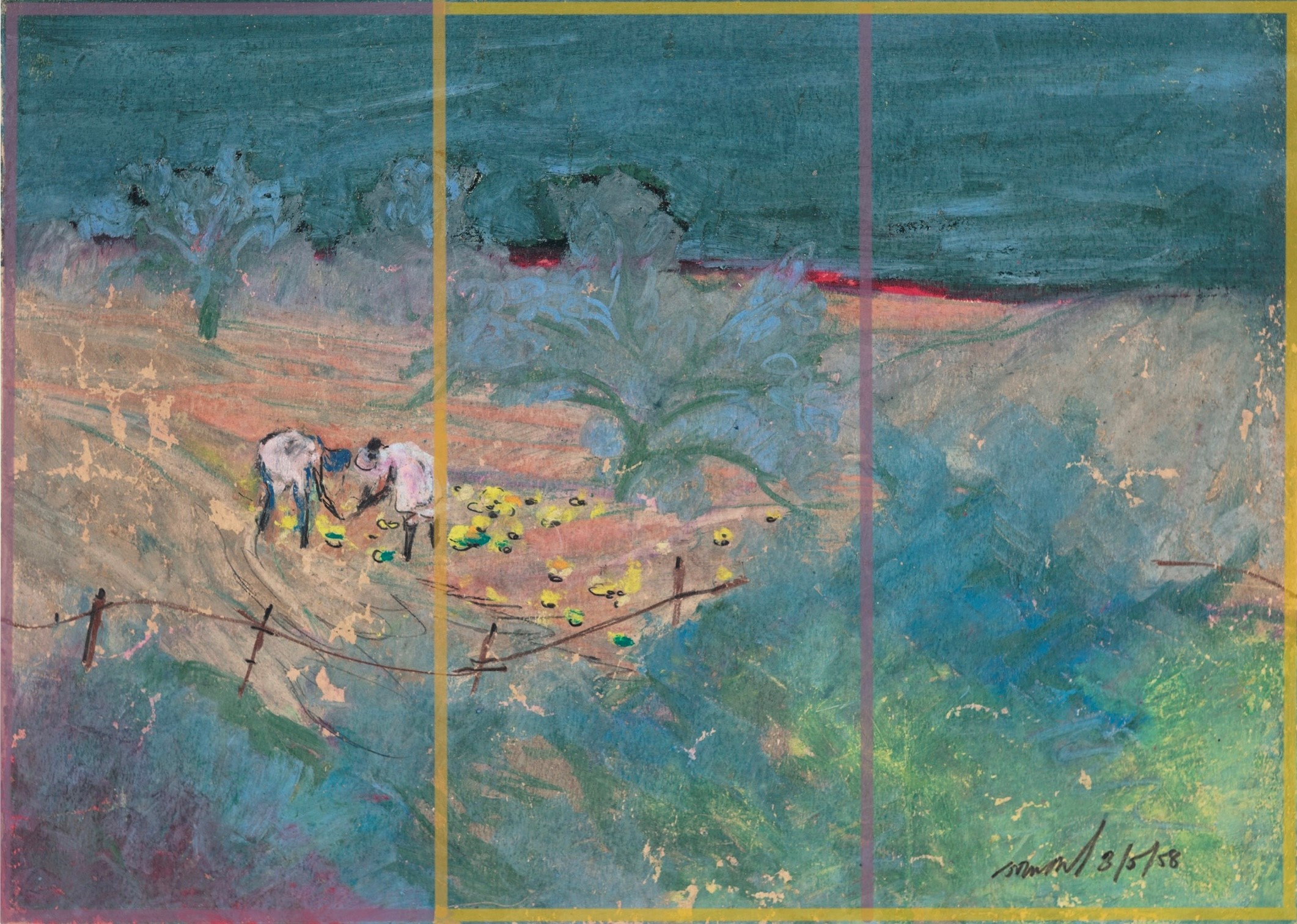
The image can also be said to be divided into thirds vertically, with points of focus located at each line. The textures and colours also vary in each third.
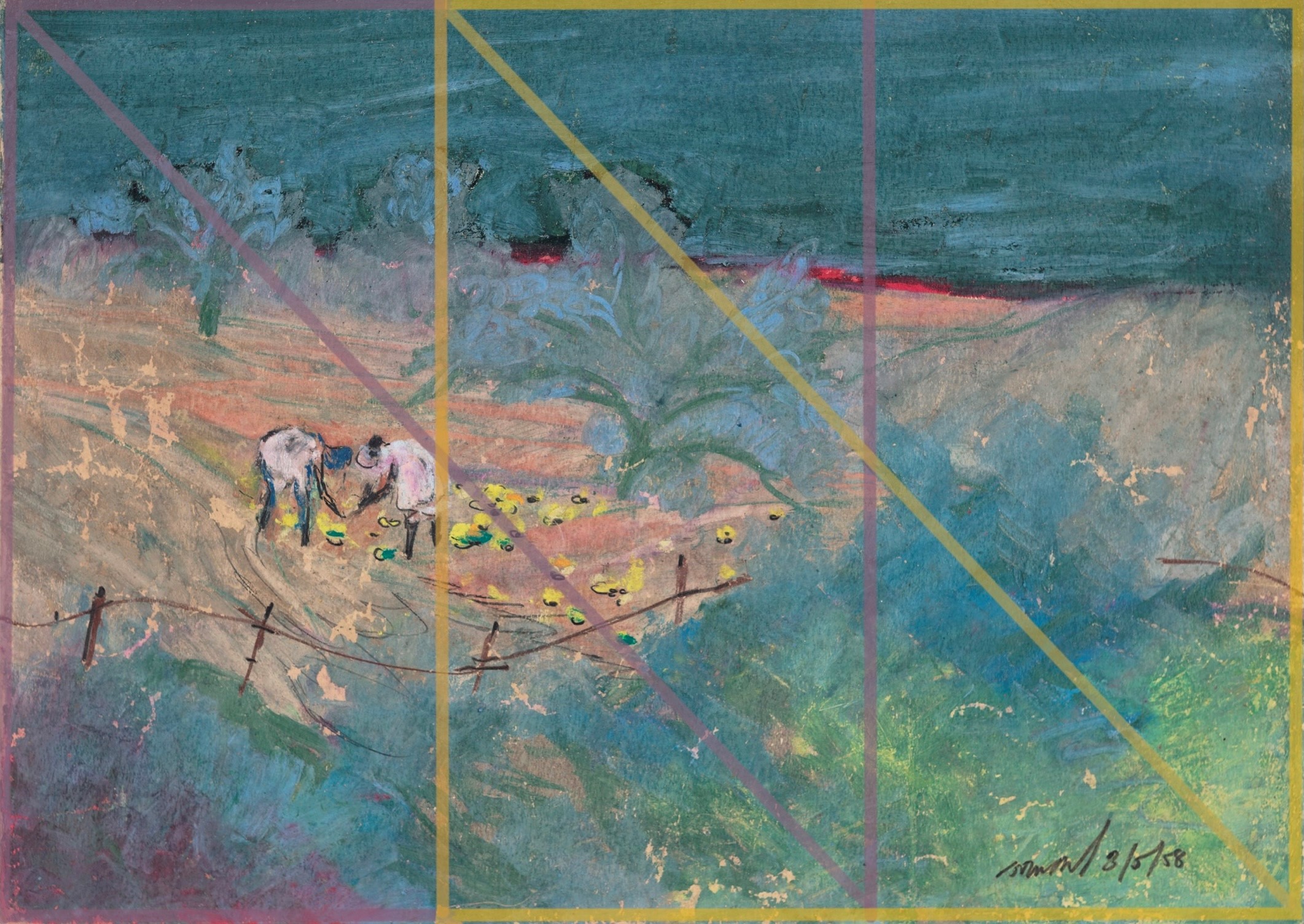
Imagine two overlapping squares, one purple and the other yellow, demarcating the vertical divisions. When we plot the diagonals across these overlapping squares, we see why Ghose's image feels so dynamic. Notice how the trees and central figures are aligned off-centre along the diagonal lines.
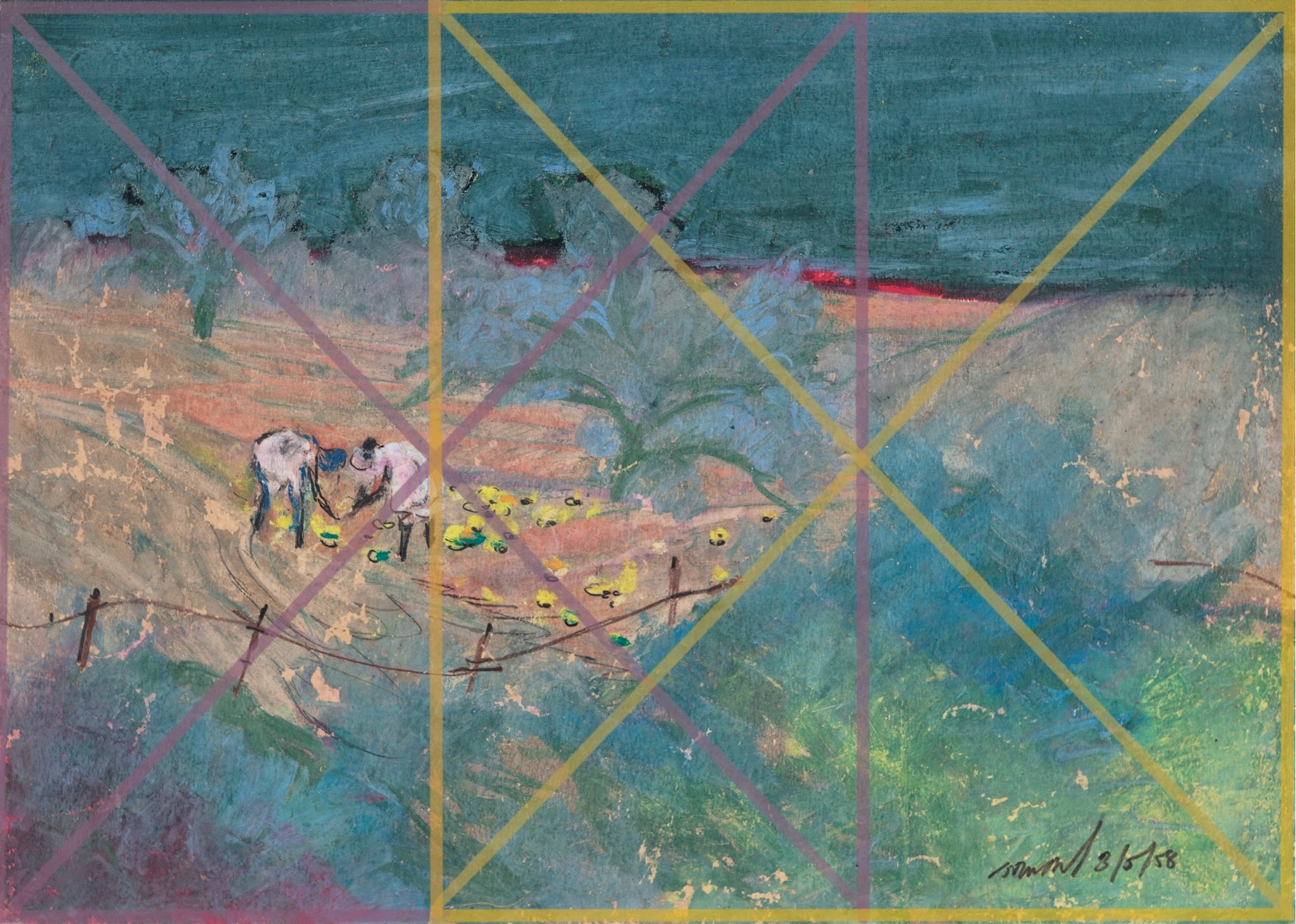
These criss-cross diagonals are the basis of the diagonal method.
The diagonal method presents a more refined reading of this ‘rule of thirds’, so that the purposes of suggesting movement in an image and locating the points of interest is better articulated by pointing out ‘force lines’ along which objects of special focus are typically placed in an image or painting. Edwin Westhoff, a Dutch photographer and pedagogue, was responsible for this new reading. He showed how, say in a typical 3:2 image that is then gridded with two overlapping squares bisected by diagonal perpendiculars, the object(s) in focus can be seen to hover along these diagonal lines (so that they are ‘off-centre’) instead of being fixed at the centre. The diagonal method becomes not only a method for reading images, but one of constructing them too and demarcating new relationships between figures and fields of colour or space. |
|
Painters used this ‘thumb-rule’ towards different ends, and not always to foreground or plot objects of focus in their work, or even use a strictly diagonal line. An Indian modern artist who responded to this method after an impasse had been reached in his creative life was Tyeb Mehta, a member of the famous Bombay Progressive Artists’ Group that included others such as M. F. Husain, F. N. Souza and S. H. Raza, many of them religious minorities after the partition of India in 1947. Born in a Gujarati Dawoodi Bohra Muslim community and growing up in Bombay (now Mumbai), Mehta would reference the violence of partition in increasingly formalised ways over his career. |
|
Tyeb Mehta Untitled (Blue Torso) - 1973 Oil on canvas Private Collection |
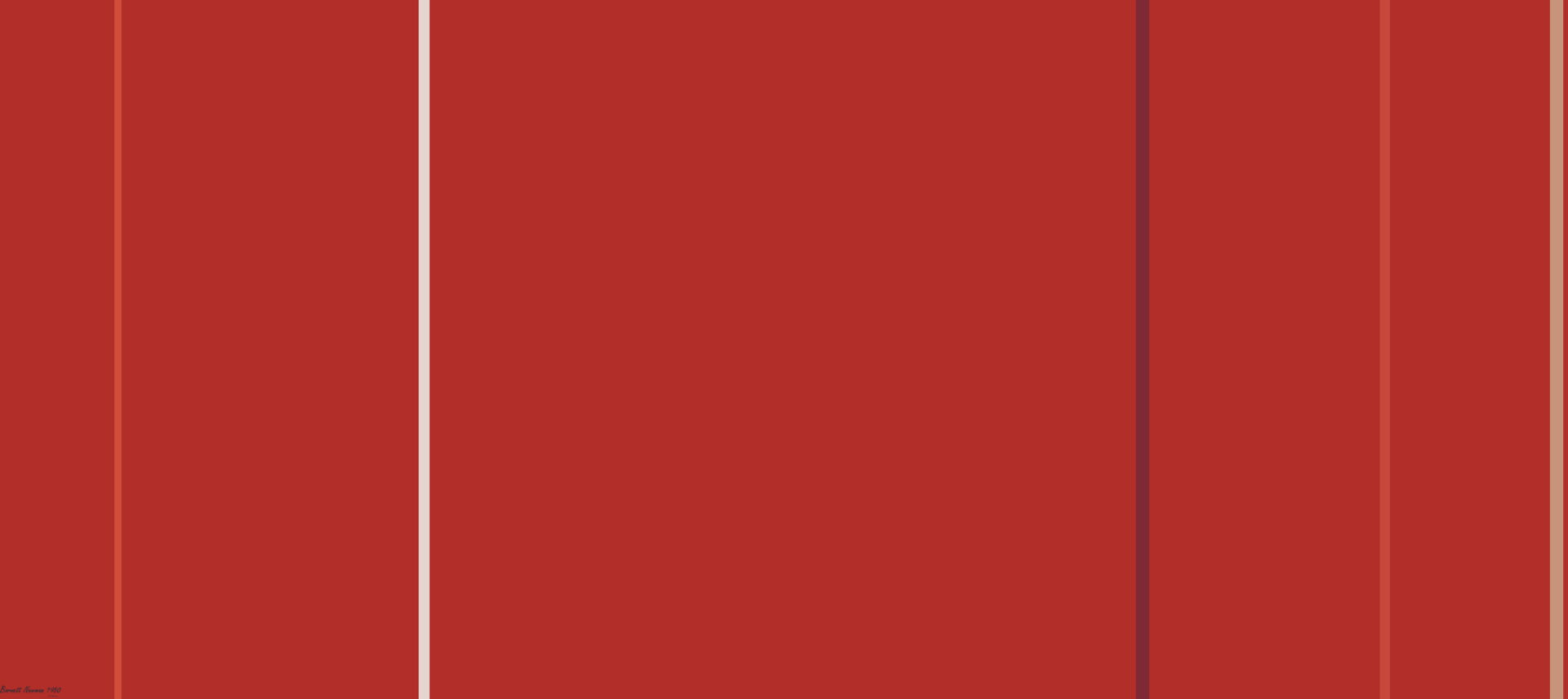
Barnett Newman’s ‘zip’ paintings were one of the sources of inspiration for Tyeb Mehta’s diagonal method. (Image: Vir Heroicus Sublimis, Barnett Newman, Wikimedia Commons)
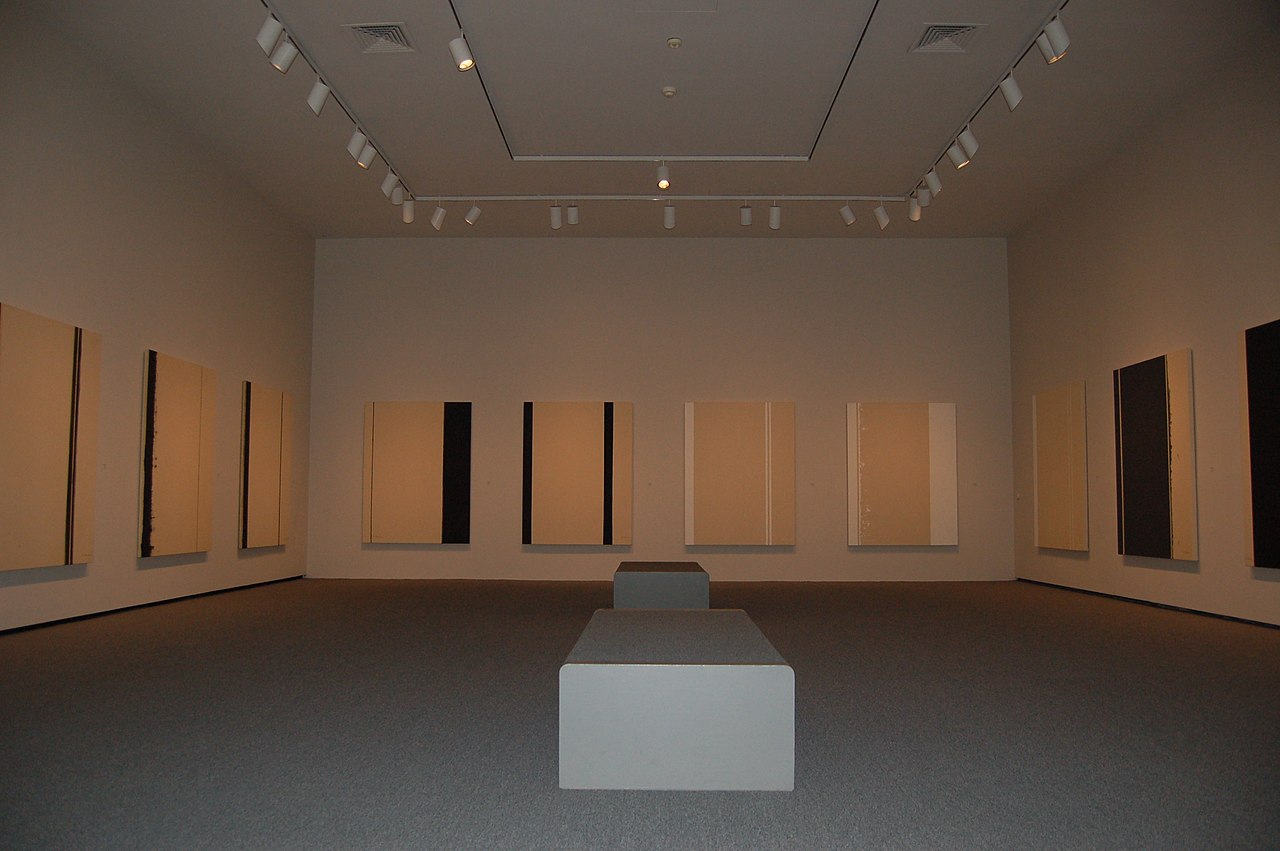
Barnett Newman
The Stations of the Cross
Image courtesy: National Gallery of Art and Lema Sabachthani, Wikimedia Commons
PRECEDENTSLooking for new ways to respond to the abstract expressionism of his time, the American artist Barnett Newman sought to start painting 'from scratch, as if painting had never existed before'. He made paintings like Moment, which featured a heavy, dry brushstroke across the canvas and Onement, I, in 1948, which used similar streaks of lines attempting to separate and unify fields of colour.
Soon, these were being colloquially referred to as ‘zip’ paintings, referencing the method by which Newman would create these bands across the canvas with masking tape.
|
|
EVOLUTIONS Artists responded quickly to Newman. Robert Rauschenberg attempted to parody it with his work Automobile Tire Print (1953), where he imitated the zip-line with a skid-mark produced by a car tyre driven over glued sheets of paper covered in black house paint. Tyeb Mehta’s encounter with Newman’s paintings—towards the end of the 1960s, when he was spending a year in New York on a Rockefeller Foundation grant—provoked a desire to re-formulate the relationship between figure and sensuous fields of colour, as suggested by writer Ranjit Hoskote. Just as critics have argued for the psychological impact of the Holocaust on Newman’s use of the zip-line across the canvas, the diagonal method also becomes a way to reference the traumatic rupture caused by the partition of the Indian subcontinent in 1947 for Mehta—an event that destroyed the imagination of a common past while clearing the way to imagine new communities of the future. |
|
Tyeb Mehta Diagonal 1972, Oil on canvas, 69.0 x 59.0 Private Collection |

Jeff Wall
Diagonal Composition
1993, transparency in lightbox, 40.0 x 46.0 cm. Courtesy of the artist
Others, such as Jeff Wall, would foreground this method conceptually by invoking the geometric lines with the help of ‘naturally’ occurring frames and diagonals around his life and studio in his series of works titled Diagonal Composition. The concept travels around the world, going through several stylistic additions and permutations, arriving once again in the work of Indian contemporary artists like Karthik Kalyanaraman and Raghava KK, whose Tanjore Stripped Bare by her Contemporary Artists, or, slanted homage to Newman (2020)—does just that, paying an homage to the early innovator of the 'zip' method. |
|
'The moment I use the diagonal, the square splits, it gets a momentum, it gets activated. Otherwise the square is a very static form. Well, I destroyed the painting by using the diagonal; I took black paint and put the diagonal on the painting. Immediately I realised that I had separated the lower and the upper portion and I could use the areas of colours, which is what I was trying to do. Then I used the diagonal in many ways, it became a pictorial element. It became a means of dislocating the image in any area of the canvas.' (Tyeb Mehta) |
|
Tyeb Mehta Diagonal Series - 1972 Oil on canvas Private Collection |
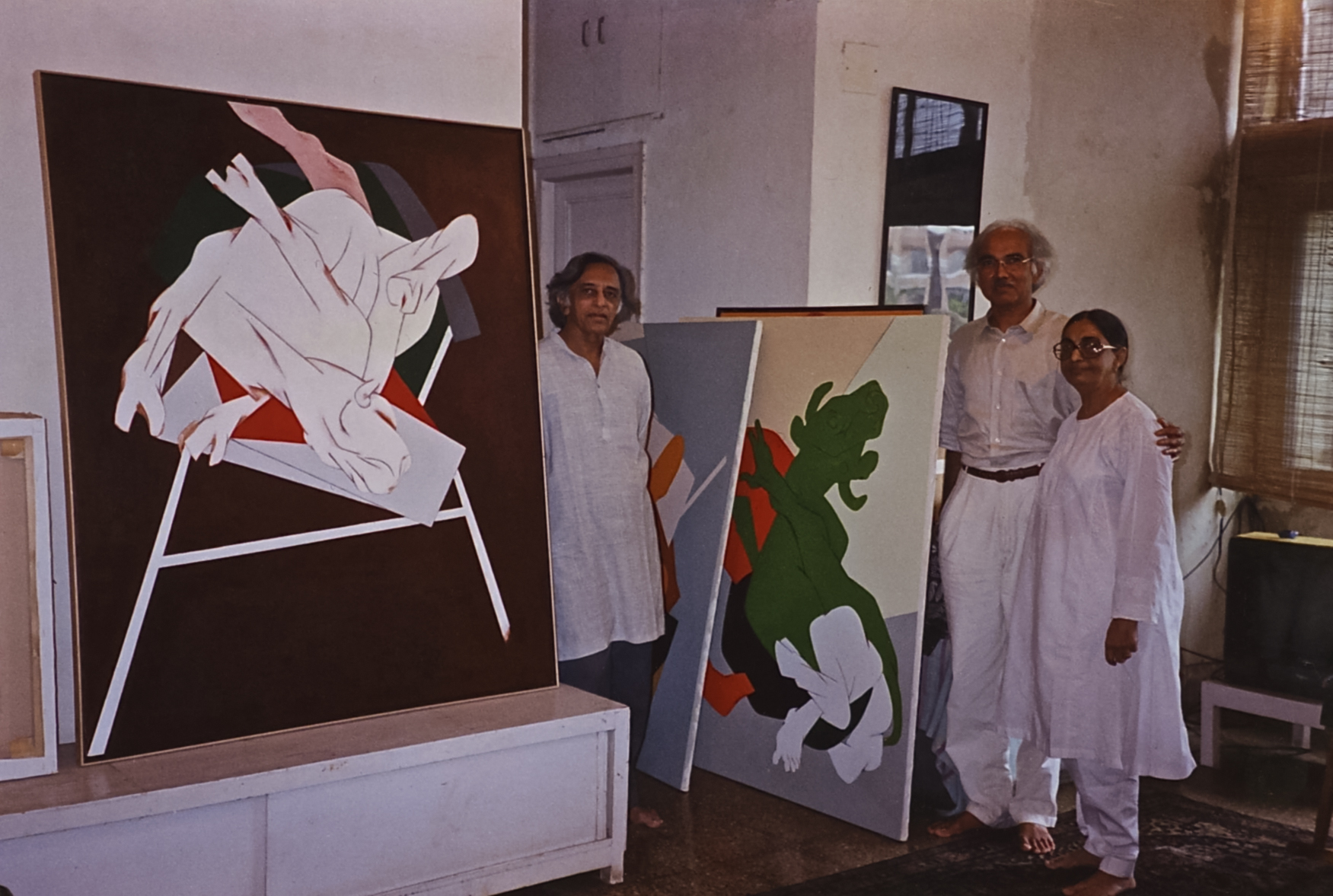
Tyeb and Sakina Mehta with Natvar Bhavsar
Image courtesy: DAG
REFERENCESHoskote, Ranjit. “Images of Transcendence: Towards a New Reading of Tyeb Mehta’s Art” in Tyeb Mehta: Images, Ideas, Exchanges. New Delhi: Vadehra Art Gallery, 2005
|


